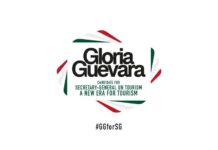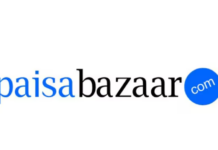
- Rs. 800 crore Lower Tier II bonds programme of UCO Bank (UCO) from [ICRA]AA- (pronounced ICRA double A minus) to [ICRA]A+ (pronounced ICRA A plus) and;
- Bank’s Rs. 500 crore Upper Tier II Bond programme from [ICRA]A (pronounced ICRA A) to [ICRA]A- (pronounced ICRA A minus).
The outlook on the long term ratings of the bank is ‘Negative’.
The ratings downgrade take into account UCO’s weak operating and financial performance during Q4FY2017 and in FY2017 overall. Driven by consecutive years of losses during last two fiscals, and high levels of non-performing assets (NPA), the capitalization levels and solvency profile remain weak for the bank. It also takes into account the unfavorable outlook on the bank’s profitability amid high NPAs and the consequent challenges which the bank is likely to face to meet the increasing capital requirements under Basel III regulations.
The bank’s asset quality remains weak with gross and net NPAs of 17.13% and 8.94% respectively as on March 31, 2017 as compared with 15.44% and 9.09% respectively as on March 31, 2016. With the standstill clause being applicable on asset classification under various schemes on resolution of stressed assets, UCO has a large number of loans continuing to be classified as standard accounts. Hence the reported asset quality is likely to deteriorate further going forward. The rise in NPAs and the consequent income reversals led to a decline in the bank’s net interest income (NII) by 21.27% in FY2017. The bank’s operating expenses also increased by 5.78% during the year. UCO’s core operating profits [1] consequently declined by 41.8% to Rs. 1,685 crore, which were not adequate to absorb the high credit provisions during the year, resulting in a net loss of Rs. 1,850.7 crore during FY2017.
Despite an equity raising of Rs 2,183 crore (including Rs. 1,925 crore from the Government of India (GoI)) and raising of Additional Tier 1 (AT 1) bonds of Rs. 750 crore during FY2017, the bank’s capital ratios remain weak with limited cushion to absorb future losses. While the Tier 1 capital improved to 8.27% as on March 31, 2017 from 7.75% as on March 31, 2016, it is only marginally higher than the regulatory minimum of 8.25% (including capital conservation buffer of 1.25%) as of March 31, 2017 mainly on account of the sustained losses. Further, the bank’s capital requirement remains large in relation to the Basel III requirements with limited cushion available to absorb losses.
In May 2017, the Reserve Bank of India (RBI) included UCO under the prompt corrective action (PCA) framework given the bank’s high net NPAs and negative return on assets. Inclusion under PCA would entail that the bank raises more capital and create higher provisions for NPAs. With 5-10% growth in risk weighted assets (RWA) and a 50 bps cushion on the minimum regulatory capital requirements, ICRA expects the bank to require a total Tier 1 capital of Rs. 3,000-Rs. 4,300 crore during FY2018 and FY2019, of which Rs. 1,800-3,000 crore has to be equity capital to meet CET-I requirements and balance AT-1 bonds. With consecutive net losses during the last two years, UCO’s distributable reserves have been eroded significantly, thereby constraining the bank’s ability to raise AT-1 capital. ICRA expects the overall equity requirement may increase to meet the Tier 1 capital requirement. UCO’s fresh Tier 1 capital raising requirements are large in relation to its market capitalization at ~55-80%. These capital estimates will also increase to the extent of the losses reported by the bank during the projected period.
The ratings continue to draw comfort from UCO’s majority sovereign ownership (76.67% shareholding by the GoI as on March 31, 2017 [2]), and the bank’s strong franchise which translates into a healthy and stable deposits base.




























